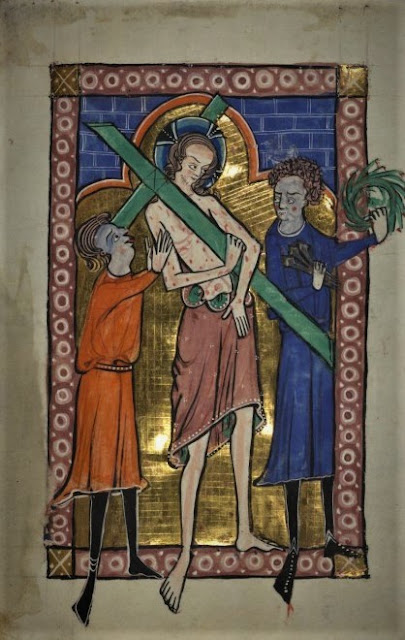On August 26, 1910 a baby girl was born to a couple of Albanian heritage in Skopje, Macedonia. She was baptized with the name of Agnes, and she grew up in a loving and devoutly Catholic household. When she was eight years old, her father died, leaving her mother with the responsibility of supporting the family, which she did by opening a shop which dealt in embroidery and fabric.
Young Agnes helped her mother, and was also deeply involved in the life of their parish church, but when she was eighteen she felt the call to religious life. She left home in September of 1928, travelling to Dublin, Ireland, where she was admitted as a postulant at the Loreto Convent. It was there that she received the religious name of Teresa, after her patroness, St. Terese of Lisieux, and she was known as Sr. Mary Teresa.
After her postulancy in Ireland, Sr. Teresa was sent to India, where she was to spend her novitiate. She arrived in Calcutta on the Feast of the Epiphany, 1929, and went immediately into the Loreto convent in Darjeeling. It was on May 24, 1937, that she professed her final vows, and during the 1930’s and 1940’s she taught at a Catholic girls’ school in Calcutta, and came to be known as Mother Teresa.
It was on September 10, 1946 that she was on the train going from Calcutta to Darjeeling. As she later recalled it, it was during that journey that she was given what she termed a “call within a call.” This was when she received the inspiration which would lead to the founding of the Missionaries of Charity. Within her call to religious life she felt the call to establish a new religious institute which would have as its mission, “to quench the infinite thirst of Jesus on the cross for love of souls,” and this would be accomplished by “laboring for the salvation and sanctification of the poorest of the poor.” This came to fruition on October 7, 1950, when the new congregation of the Missionaries of charity was erected as a religious institute for the Archdiocese of Calcutta.
Her work had begun in a small way. She washed the sores of sick children; she nursed a woman dying of starvation and tuberculosis; she cared for a homeless man who was without any family, and near death. One by one, some of her former students joined her in the work. Their day would begin with Mass and Holy Communion, and then they would set out on the streets of Calcutta – they were recognizable by their white saris with blue borders – and they had the purpose of caring for the “poorest of the poor,” who had no one to care for them. They searched them out as though searching for Jesus Himself.
Throughout the 1950’s and into the 1960’s the work expanded, as did the number of those joining the Missionaries of Charity. They worked not only in Calcutta, but throughout India. Then, in 1965, Pope Paul VI raised the congregation from an archdiocesan institute to one of pontifical right, and they began to spread throughout the world, going first to Venezuela, then into Europe and Africa, eventually opening houses in Australia, the Middle East, and North America.
In 1979 Mother Teresa was awarded the Nobel Peace Prize, and by that time there were 158 Missionaries of Charity foundations throughout the world, and its growth continued, until by 1997 there were nearly 4,000 Sisters in 600 foundations, in 123 countries of the world. In the summer of 1997, after an extensive trip to visit her sisters in Rome, New York, and Washington, Mother Teresa’s health was failing. She returned to Calcutta, and on September 5, 1997, she died at the Motherhouse, very near the Loreto convent where she had arrived some sixty-nine years earlier.
At her death she was mourned throughout the world. Hundreds of thousands came to Calcutta to pray and pay their respect to this remarkable woman. She was given a state funeral, and her body was taken in procession throughout the streets of Calcutta, where she herself had searched out the “poorest of the poor.” After only two years, in recognition of her sanctity, special permission was given to open her cause. She was beatified on October 19, 2003 and was canonized on September 4, 2016. In speaking of her, St. John Paul II called her “an icon of the Good Samaritan.”
O God, whose blessed Son became poor that we through his poverty might be rich: Deliver us, we pray thee, from an inordinate love of this world, that, inspired by the devotion of thy servant, Saint Teresa of Calcutta, we may serve thee with singleness of heart, and attain to the riches of the age to come; through the same thy Son Jesus Christ our Lord, who liveth and reigneth with thee, in the unity of the Holy Spirit, one God, now and for ever.













,_Saint_Bartholomew,_ca._1497.jpg)

